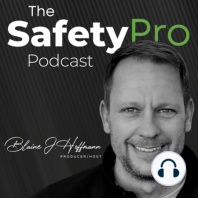33 min listen
037: Safety for Tree Trimmers
ratings:
Length:
18 minutes
Released:
Mar 12, 2018
Format:
Podcast episode
Description
Powered by iReportSource Get the freebies mentioned in this episode HERE As I get ready to head to the beach for Spring Break (I will already be there when this episode drops!) I was thinking about some of the seasonal work we need doing at our homes as well as at our businesses. And that got me thinking about tree trimmers. And it hit me - when it comes to workplace safety, it is easy to overlook the folks that do some of this work, either at our homes or when we hire these companies to help us maintain our facilities. Each year thousands of trees are uprooted by powerful winds from hurricanes, thunderstorms, etc. And usually taking power lines and transformers with them. I wanted to get a quick topic out about the safety needed for workers that come out and take care of these trees and help us improve our personal property as well as our businesses. Tree trimming is serious business. There are numerous SERIOUS safety hazards involved. Everything from falls to electrical hazards, these workers must be well-trained, well-equipped and focused to do this job safely. One of the more common hazards deals with power lines. Either downed lines from a storm or tree that fell or just trimming tress near power lines. The safest approach is ALWAYS ASSUME THAT POWER LINES ARE ENERGIZED! If clearing trees, contact the utility company to discuss de-energizing and grounding or shielding of power lines. This takes time, yes, but just search online for stories involving tree trimmers being shock or electrocuted on the job! Oh, and it often involves ground workers; yep, this can happen when a ladder or the boom of cherry picker unknowingly comes into contact with an energized lines and the operator is insulated in the basket, doesn’t realize it and a ground worker walks up and grabs the metal door of the truck, reaches for a tool or something like that and becomes part of that circuit. It happens more than you think! These can all be avoided. One way to avoid disaster is to always perform a hazard assessment of the job in general as well as the work area prior to the start of work. So for electrical hazards, ask will you get closer than, say, 10 feet to your average power line? What about the stability of the ground for outriggers on the cherry picker? Is there traffic nearby or will you need to be in the roadway? What about clearance for your work, especially when removing or cutting down a tree? Let me say, to “fell a tree” means more than just cutting it down. Felling means to cut the tree in such a way that it falls in the desired direction and results in the least damage to the tree. To safely fell a tree, you must eliminate or minimize exposure to potential hazards found at the tree and in the surrounding area. This means BEFORE YOU BEGIN WORKING! Part of being prepared for your work means having the right equipment. Always use proper personal protective equipment as recommended by the manufacturer’s operating manual, including eye, face, head, hand, and foot protection for tools and machinery. Chippers, shredders, chainsaws, etc. all have very specific safety requirements. And don’t forget TRAINING! Your employees NEED to be trained on all the tools they will be using. Don’t rely on the old “I have been using chainsaws for years” certification. Just look online for any number of manufacturer videos or literature on chainsaw safety. Or any other power tool. The Power Tool Institute has some good videos a well, so search for them too. By the way, I have an OSHA publication that covers the hazards of wood shippers as well. So be sure to hit that link! Broken or hanging branches, attached vines, or a dead tree that is leaning can be of concern. All of these hazards can cause injuries. So making sure employees are trained to spot these overhead hazards and stage work accordingly should also be covered. I have an OSHA publication that covers falls and falling objects hazards for tree care workers. Just hit the link in these show notes or on
Released:
Mar 12, 2018
Format:
Podcast episode
Titles in the series (100)
023: OSHA Outreach Training Issues: Safety Training vs OSHA Outreach Training by The Safety Pro Podcast
